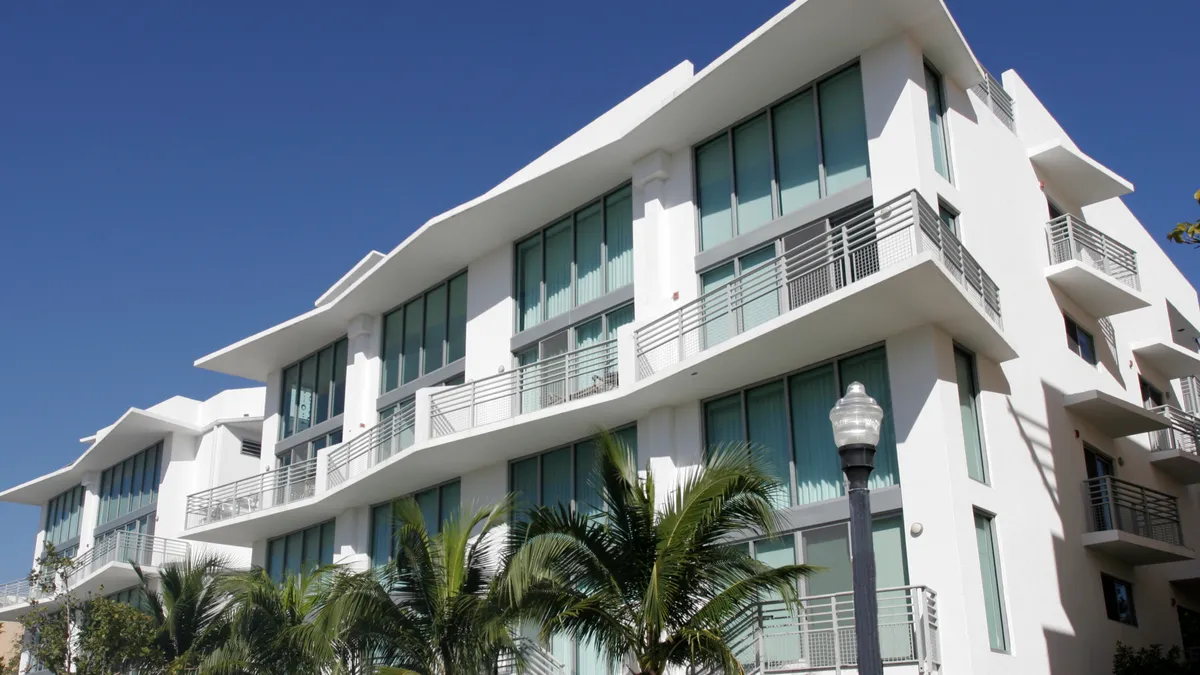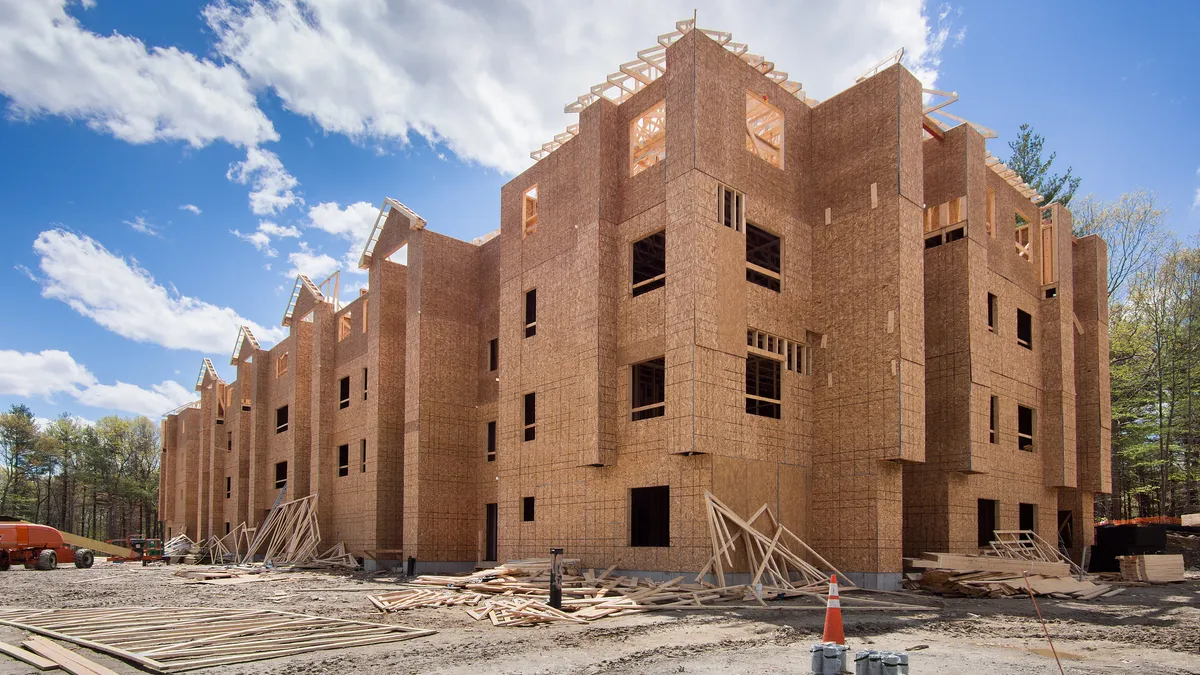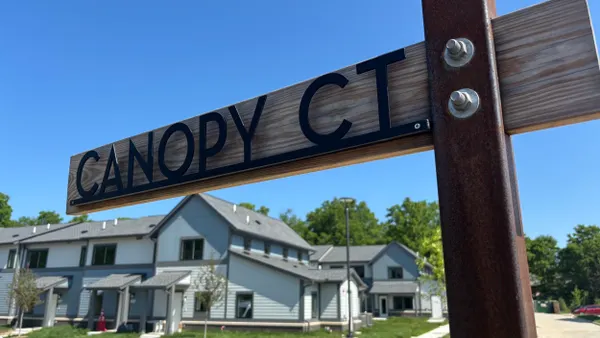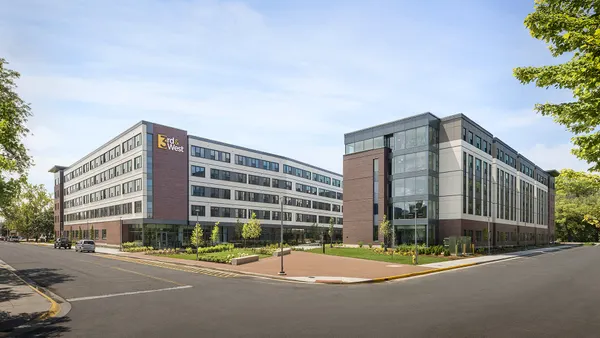Dive Brief:
- Compared to a standard building, a multifamily structure constructed to Passive House standards can use up to 80% less energy for its day-to-day operations — and at about the same construction cost, according to a new report from the New York City-based Passive House Network, a building standards educator affiliated with the Passive House Institute.
- In a survey of 45 multifamily buildings in Massachusetts and New York built to the Passive House standard, the PHN found that construction costs for Passive House buildings were only 3.5% higher on average than the cost of standard structures.
- Incentives such as housing finance programs and Inflation Reduction Act rebates can lower these costs even more, making many multifamily Passive House buildings cheaper to build than their conventional counterparts, the report said.
Dive Insight:
The popularity of multifamily Passive House construction has risen significantly over the last decade, though it remains less than 1% of multifamily construction overall, according to the report. Roughly 16,000 units of Passive House multifamily housing have been built or are under construction across the country in 27 states. Most have been designed or constructed since 2018, and 150 of the projects, or about half, consist of affordable housing.
The Passive House standard covers the following building approaches:
- Continuous insulation and an airtight building envelope that prevents the escape of indoor air or the intrusion of outdoor air.
- High-performance windows and doors.
- A ventilation system that provides high heat recovery and fresh air.
- A much smaller space heating and cooling system than conventional buildings.
Taken together, these building traits offer greater temperature stability inside the built structure, which not only reduces the building’s overall energy usage, but also provides protection against severe weather events and power outages.
A recent report from the U.S. Department of Energy states that highly energy-efficient buildings, including those built to Passive House standards, can maintain habitable conditions in extreme weather events for a longer period of time than a standard multifamily building. For example, while a typical building in Atlanta would be able to withstand a power outage during a seven-day cold snap for 1.4 days, a building constructed to the 2021 IECC standards would last for 2.3 days, and a Passive House certified structure would be able to last the full seven days.
The airtight envelope created by the Passive House standard, and corresponding savings in energy use, aligns with several states’ strategies for building electrification. In Massachusetts, the standard is being used to transition the state’s building stock off natural gas, while drastically increasing its efficiency, with the help of building rebates and incentives through the Mass Save program.
Passive House tactics make sense on many levels for multifamily developers, according to Bronwyn Barry, founding board member for the Passive House Network.
“Our nation is facing an affordable housing crisis and energy cost crisis, while also confronting severe challenges posed by extreme heat and storms from climate change,” Barry said in a press release on the report. “Passive House creates more housing, lowers energy costs and builds resilience against the impacts of climate, while also providing healthier air indoor and out.”










